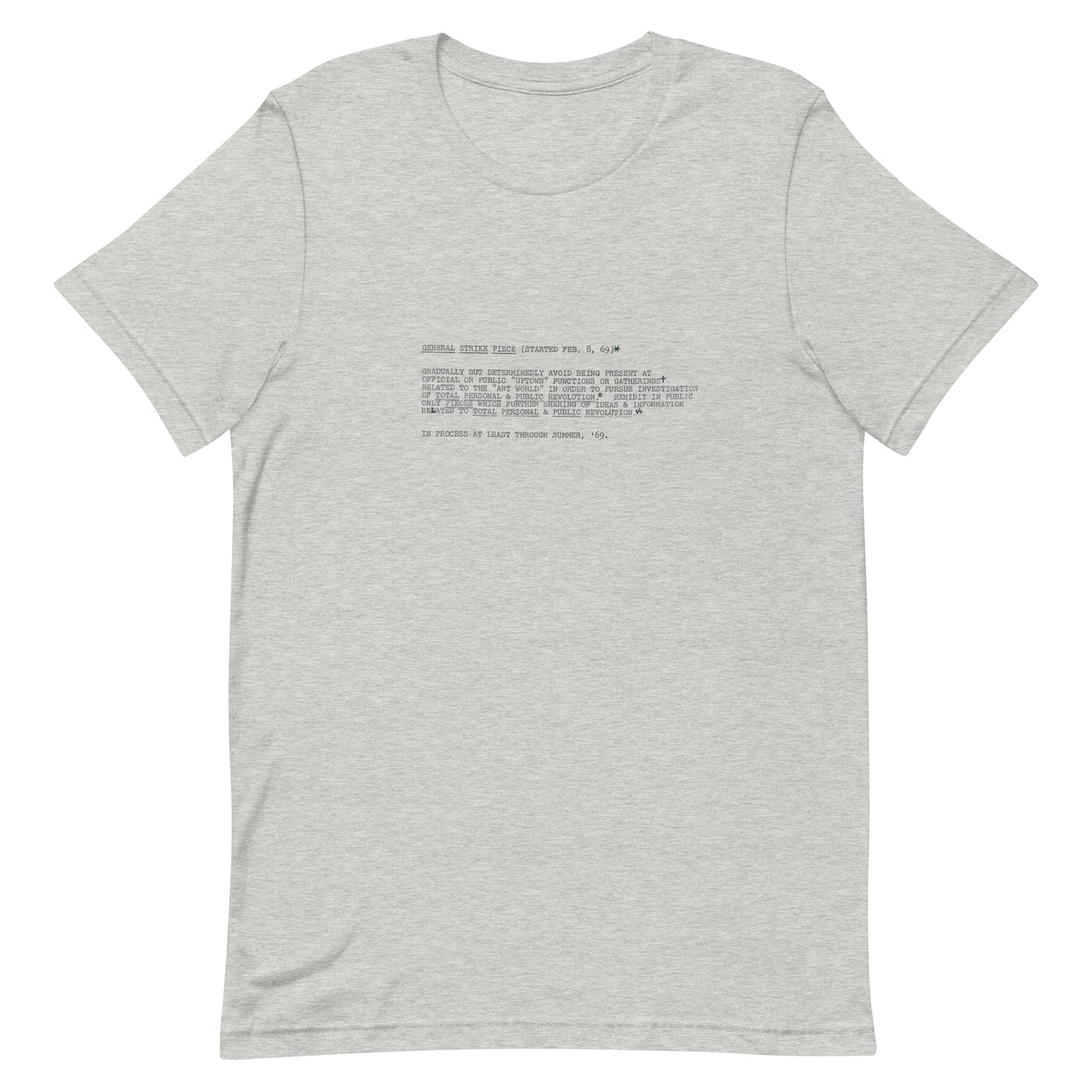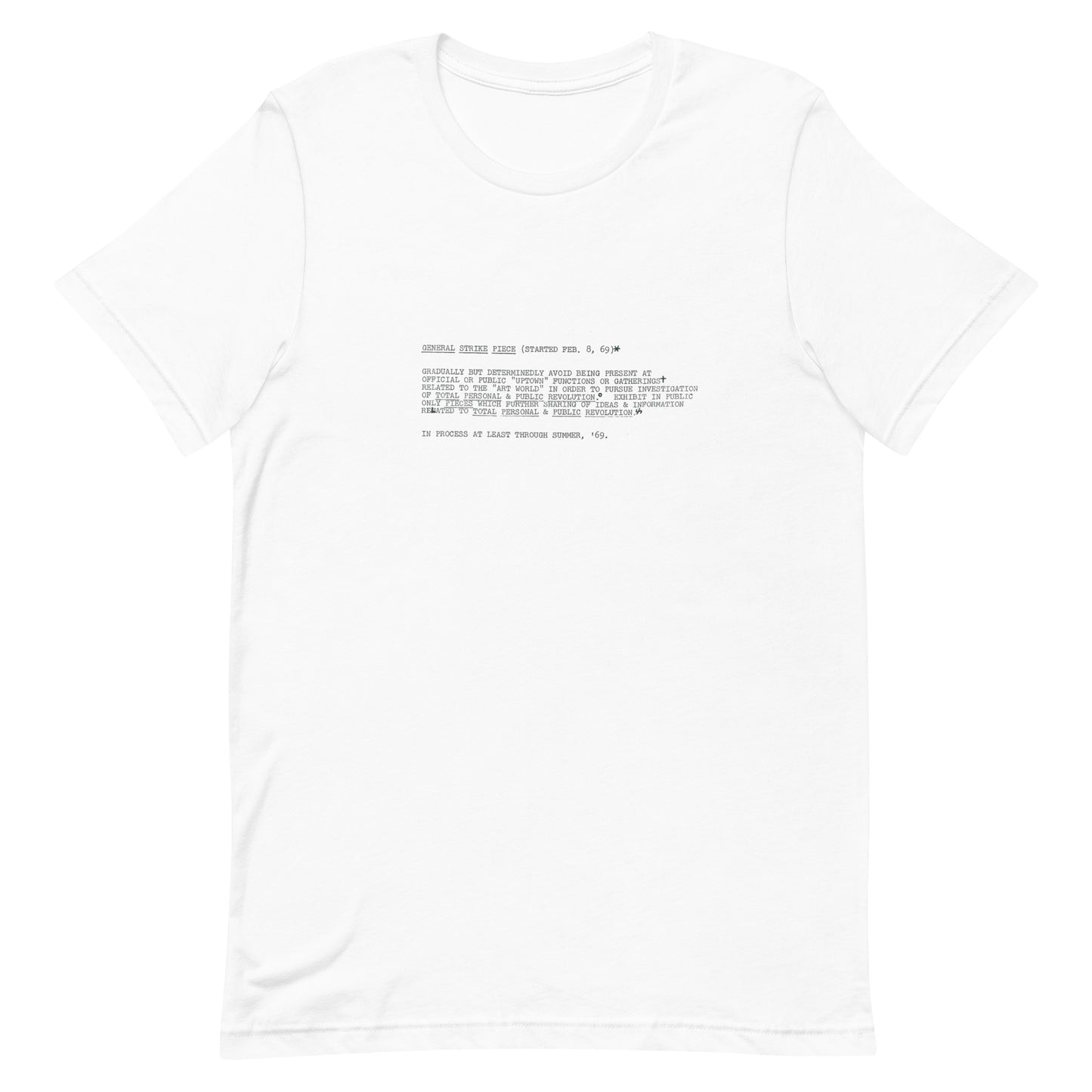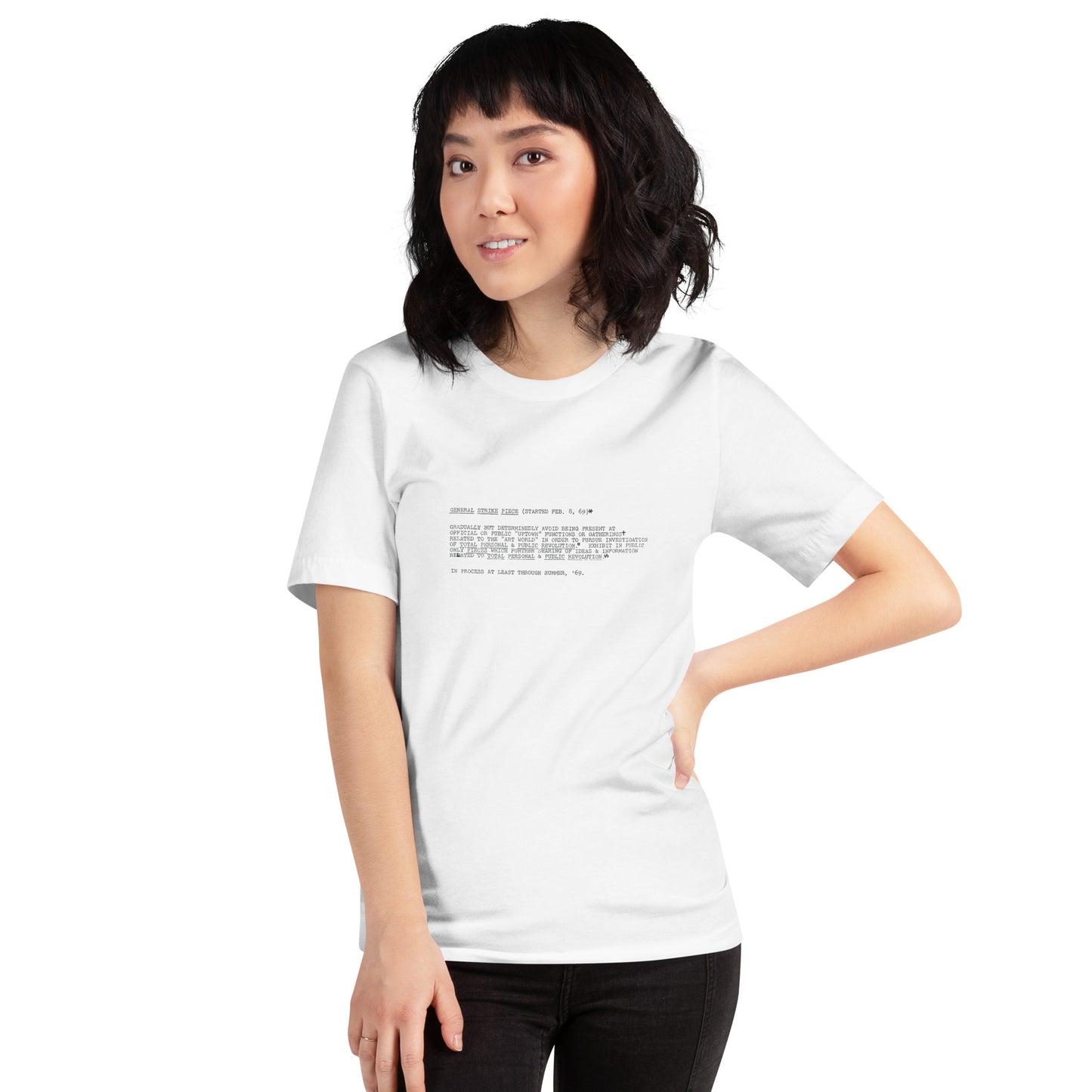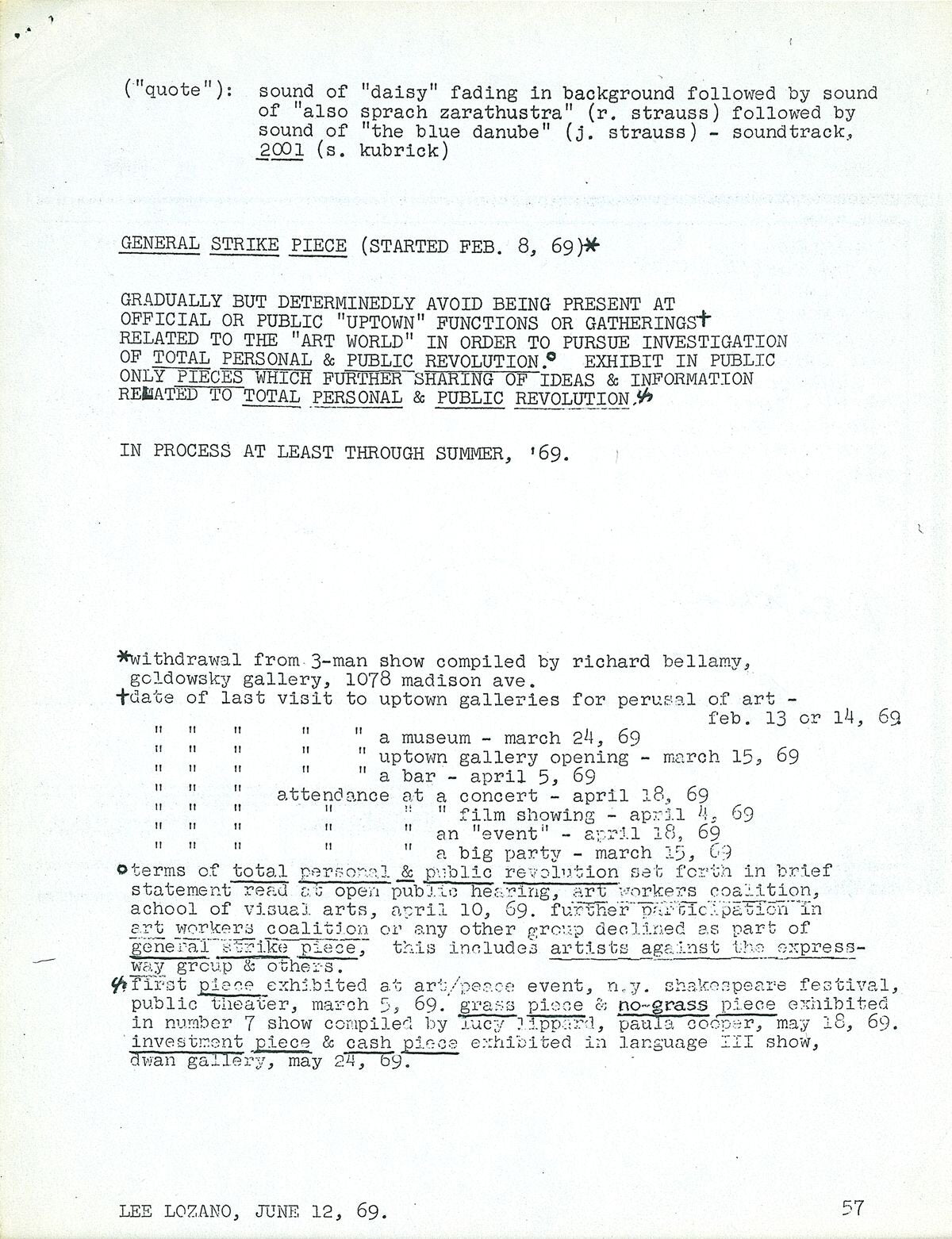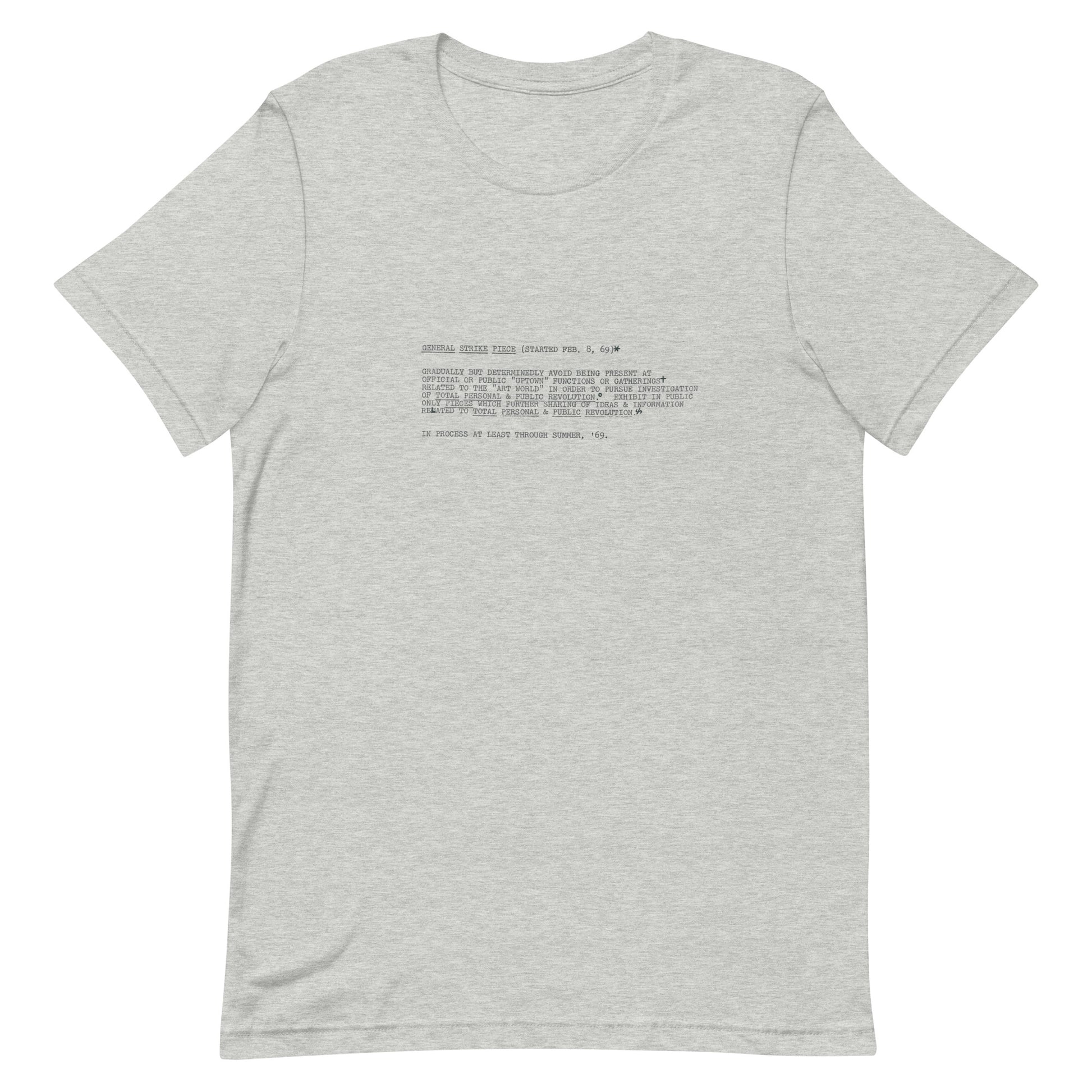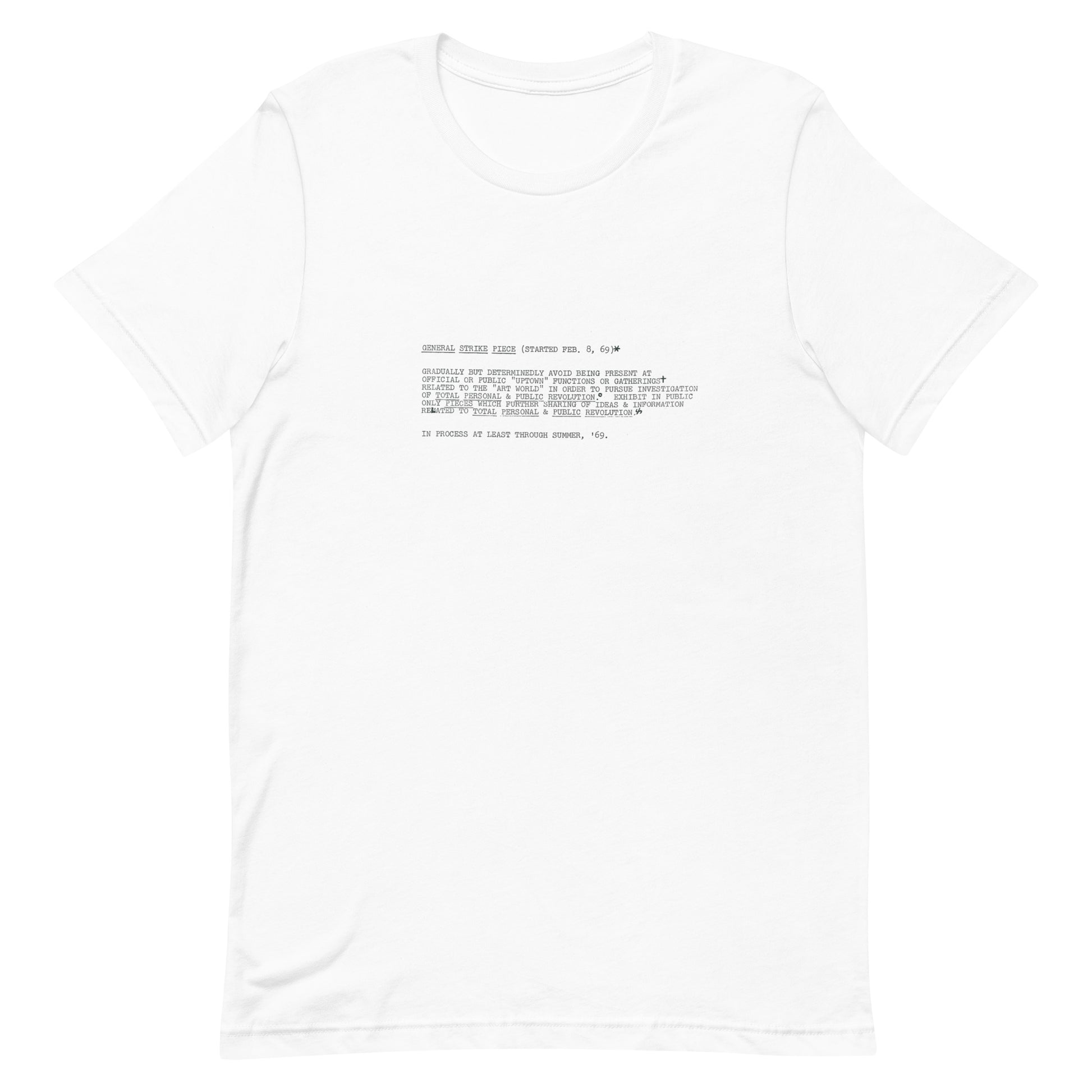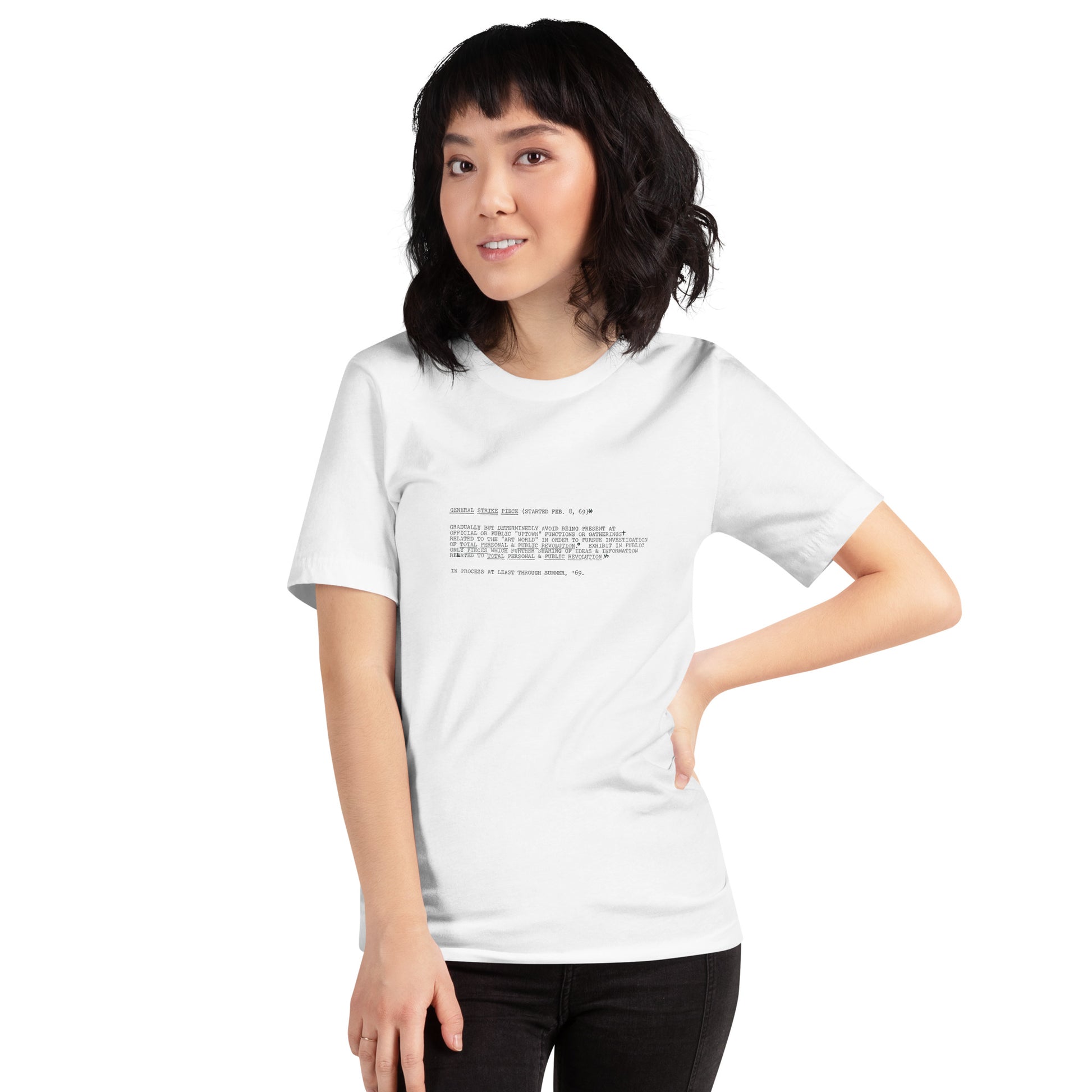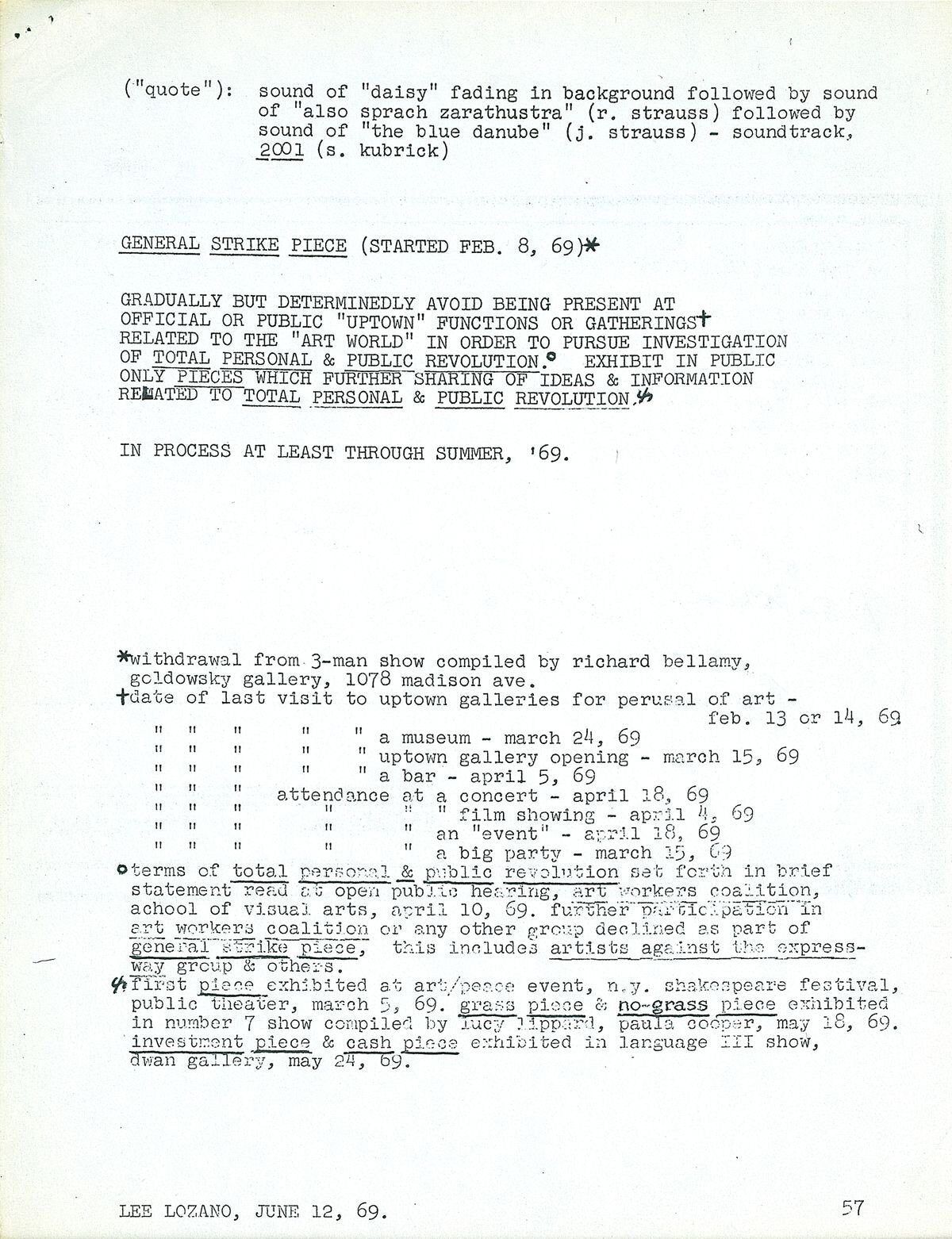Minor Canon
Lee Lozano General Strike Piece tee
Regular price
$19.00 USD
Regular price
Sale price
$19.00 USD
Unit price
per
Shipping calculated at checkout.
Couldn't load pickup availability
Lee Lozano (1930–1999) was an American painter and conceptual artist. Lozano, born Lenore Knaster, attended the Art Institute of Chicago in the ’50s (where she met her future husband, Adrian Lozano) and began her New York career in the early ’60s making cartoonish, overtly sexual paintings and drawings, not unlike the hand-painted Pop of Peter Saul, early Claes Oldenburg, or the late efforts of Philip Guston. In the late 1960s she experimented with a more Minimalist aesthetic, creating monochromatic Wave paintings based on the physics of light.
Like many of her contemporaries, including Adrian Piper and Vito Acconci, Lozano began to pursue conceptual art projects starting in the mid-1960s. In February 1969 she commenced her General Strike Piece, in which she withdrew from the New York art world. Her instructions to herself were as follows:
GRADUALLY BUT DETERMINEDLY AVOID BEING PRESENT AT OFFICIAL OR PUBLIC "UPTOWN" FUNCTIONS OR GATHERINGS RELATED TO THE "ART WORLD" IN ORDER TO PURSUE INVESTIGATIONS OF TOTAL PERSONAL AND PUBLIC REVOLUTION. EXHIBIT IN PUBLIC ONLY PIECES WHICH FURTHER SHARING OF IDEAS & INFORMATION RELATED TO TOTAL PERSONAL AND PUBLIC REVOLUTION.
In April 1969, Lozano began her Grass and No-Grass pieces, in which she smoked (or abstained from) marijuana every day for several weeks at a time. Lozano’s Dropout Piece (begun ca. 1970) is one of her most challenging and elusive works. It is the name Lozano gave to her self-imposed transformation from art world insider to outsider. It is also a large-scale action carried out with lifelong, indeed posthumous, consequences.
In August 1971, she began another notorious work of refusal, Boycott Women. What began as a one-month experiment intended to improve communication with women wound up as a twenty-seven year hiatus from speaking or otherwise relating to women. Her systematic rejection of all members of her own gender lasted for the remainder of her life; she effectively cut off ties with friends, fellow artists, gallerists, and other women who had been long-time supporters of her art, including the feminist curator and art critic Lucy Lippard.
After leaving New York and moving into her parents’ house in Dallas, Texas in 1982, Lozano fell into relative obscurity until the late 1990s, when she was diagnosed with inoperable cervical cancer. She was persuaded to allow several concurrent exhibitions of her work, three at SoHo galleries and one at the Wadsworth Atheneum, which revived her legacy just before her death in 1999 at the age of 68.
Interviewed in 2001, Lucy Lippard noted that "Lee was extraordinarily intense, one of the first, if not the first person (along with Ian Wilson) who did the life-as-art thing. The kind of things other people did as art, she really did as life—and it took us a while to figure that out."
Further reading:
https://www.afterall.org/book/lee-lozano-dropout-piece
Jo Applin; Hard Work: Lee Lozano's Dropouts. October 2016; (156): 75–99. doi: https://doi.org/10.1162/OCTO_a_00252
• 100% combed and ring-spun cotton (Heather colors contain polyester)
• Fabric weight: 4.2 oz/yd² (142 g/m²)
• Pre-shrunk fabric
• Side-seamed construction
• Shoulder-to-shoulder taping
• Blank product sourced from Guatemala, Nicaragua, Mexico, Honduras, or the US
Like many of her contemporaries, including Adrian Piper and Vito Acconci, Lozano began to pursue conceptual art projects starting in the mid-1960s. In February 1969 she commenced her General Strike Piece, in which she withdrew from the New York art world. Her instructions to herself were as follows:
GRADUALLY BUT DETERMINEDLY AVOID BEING PRESENT AT OFFICIAL OR PUBLIC "UPTOWN" FUNCTIONS OR GATHERINGS RELATED TO THE "ART WORLD" IN ORDER TO PURSUE INVESTIGATIONS OF TOTAL PERSONAL AND PUBLIC REVOLUTION. EXHIBIT IN PUBLIC ONLY PIECES WHICH FURTHER SHARING OF IDEAS & INFORMATION RELATED TO TOTAL PERSONAL AND PUBLIC REVOLUTION.
In April 1969, Lozano began her Grass and No-Grass pieces, in which she smoked (or abstained from) marijuana every day for several weeks at a time. Lozano’s Dropout Piece (begun ca. 1970) is one of her most challenging and elusive works. It is the name Lozano gave to her self-imposed transformation from art world insider to outsider. It is also a large-scale action carried out with lifelong, indeed posthumous, consequences.
In August 1971, she began another notorious work of refusal, Boycott Women. What began as a one-month experiment intended to improve communication with women wound up as a twenty-seven year hiatus from speaking or otherwise relating to women. Her systematic rejection of all members of her own gender lasted for the remainder of her life; she effectively cut off ties with friends, fellow artists, gallerists, and other women who had been long-time supporters of her art, including the feminist curator and art critic Lucy Lippard.
After leaving New York and moving into her parents’ house in Dallas, Texas in 1982, Lozano fell into relative obscurity until the late 1990s, when she was diagnosed with inoperable cervical cancer. She was persuaded to allow several concurrent exhibitions of her work, three at SoHo galleries and one at the Wadsworth Atheneum, which revived her legacy just before her death in 1999 at the age of 68.
Interviewed in 2001, Lucy Lippard noted that "Lee was extraordinarily intense, one of the first, if not the first person (along with Ian Wilson) who did the life-as-art thing. The kind of things other people did as art, she really did as life—and it took us a while to figure that out."
Further reading:
https://www.afterall.org/book/lee-lozano-dropout-piece
Jo Applin; Hard Work: Lee Lozano's Dropouts. October 2016; (156): 75–99. doi: https://doi.org/10.1162/OCTO_a_00252
• 100% combed and ring-spun cotton (Heather colors contain polyester)
• Fabric weight: 4.2 oz/yd² (142 g/m²)
• Pre-shrunk fabric
• Side-seamed construction
• Shoulder-to-shoulder taping
• Blank product sourced from Guatemala, Nicaragua, Mexico, Honduras, or the US
Size guide
| LENGTH | WIDTH | CHEST | |
| XS (inches) | 27 | 16 ½ | 31-34 |
| S (inches) | 28 | 18 | 34-37 |
| M (inches) | 29 | 20 | 38-41 |
| L (inches) | 30 | 22 | 42-45 |
| XL (inches) | 31 | 24 | 46-49 |
| 2XL (inches) | 32 | 26 | 50-53 |
| 3XL (inches) | 33 | 28 | 54-57 |
| LENGTH | WIDTH | CHEST | |
| XS (cm) | 68.6 | 42 | 78.7-86.4 |
| S (cm) | 71.1 | 45.7 | 86.4-94 |
| M (cm) | 73.7 | 50.8 | 96.5-104.1 |
| L (cm) | 76.2 | 55.9 | 106.7-114.3 |
| XL (cm) | 78.7 | 61 | 116.8-124.5 |
| 2XL (cm) | 81.3 | 66 | 127-134.6 |
| 3XL (cm) | 83.8 | 71.1 | 137.2-144.8 |
